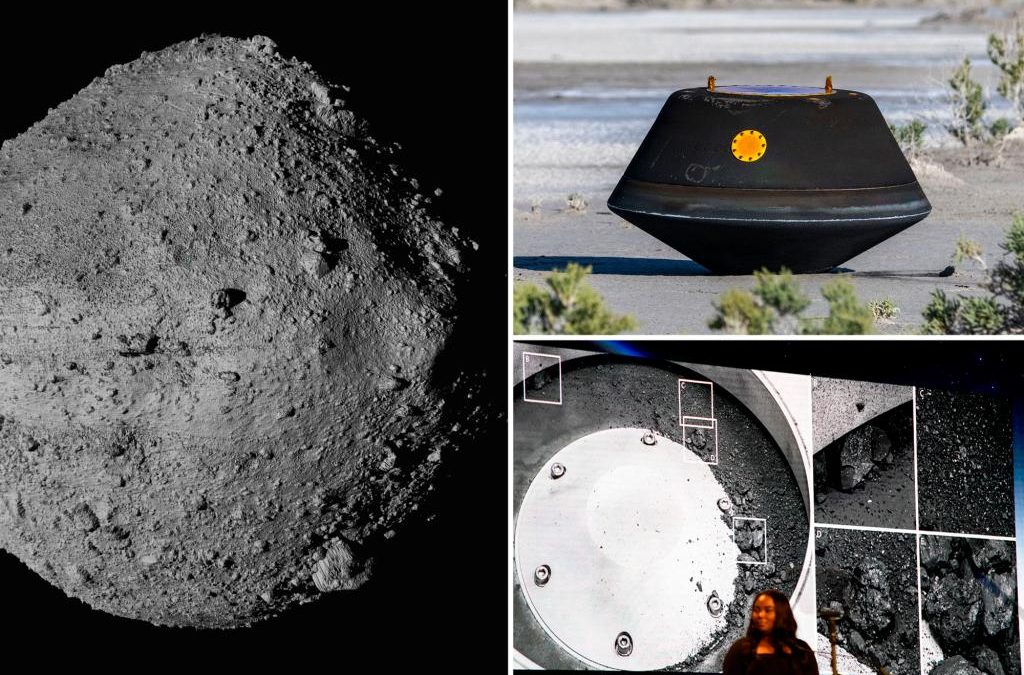This discovery could rock our world.
The National Aeronautics and Space Administration has collected samples from Bennu — a 4.5 billion-year-old “near-Earth” asteroid that has a slight chance of a planetary collision 159 years from now — and they could show, as the agency described it, “the building blocks of life on Earth.”
NASA’s Origins, Spectral Interpretation, Resource Identification and Security – Regolith Explorer spacecraft, or OSIRIS-REx for short, retrieved parts of Bennu seen to contain both “abundant” carbon content and water.
The discovery opens a door to the possibility that our planet’s habitable capabilities — unique to the rest of the solar system — stem from portions of the rock.
The samples were safely parachuted down to the Department of Defense’s Utah Test and Training Range at the end of last month — part of a first-of-its-kind mission that started in 2016 — for analysis.
“The OSIRIS-REx sample is the biggest carbon-rich asteroid sample ever delivered to Earth and will help scientists investigate the origins of life on our own planet for generations to come,” said NASA Administrator Bill Nelson on Wednesday.
“NASA missions like OSIRIS-REx will improve our understanding of asteroids that could threaten Earth while giving us a glimpse into what lies beyond. The sample has made it back to Earth, but there is still so much science to come – science like we’ve never seen before.”
NASA also reported that not only do the traces of Bennu — a space body only a tad wider than the Empire State Building’s height — shine new light on Earth’s origins but also contribute to our understanding of the solar system’s formation as well.
NASA is currently looking into how the life-forming elements may have first become “seeded” on Earth from outer space as well.
Bennu itself is believed to have broken off from a larger, more carbon-rich asteroid between 700 million and 2 billion years ago.
The recovery of Bennu’s samples also revealed “bonus” materials that took additional time for NASA experts to collect once Earthbound. The next two years will see further analysis and preservation of at least 70% of the samples for worldwide exploration from more than 200 scientists around the globe.
In the coming weeks, other pieces will be put on loan to the Smithsonian Institution, Space Center Houston and the University of Arizona.
“As we peer into the ancient secrets preserved within the dust and rocks of asteroid Bennu, we are unlocking a time capsule that offers us profound insights into the origins of our solar system …The bounty of carbon-rich material and the abundant presence of water-bearing clay minerals are just the tip of the cosmic iceberg,” said Dante Lauretta, the OSIRIS-REx principal investigator.
“These discoveries … propel us on a journey to understand not only our celestial neighborhood but also the potential for life’s beginnings. With each revelation from Bennu, we draw closer to unraveling the mysteries of our cosmic heritage.”
Source




